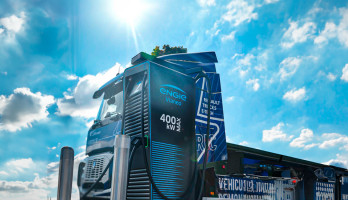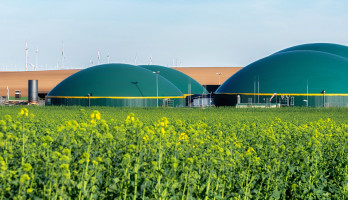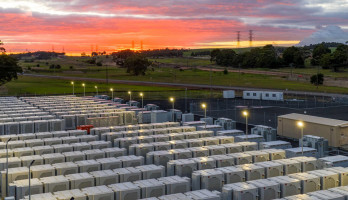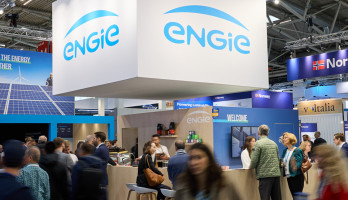
On the way to climate neutrality: How companies grow with "Real Zero"
With the adoption of the European Climate Act in October 2020, the legal basis for establishing climate neutrality was created at European level. In order to achieve the 2050 climate neutrality target and the EU emissions reduction target of 60 percent by 2030 (compared to 1990 levels), support and recovery programs for larger European economies are increasingly being linked to the European Commission's climate policy objectives. The long-term commitment of all EU member states, which goes far beyond the Corona pandemic and crisis, gives companies a reliable guidance for their strategic alignment and further financial options for growth in the future.
A comprehensive approach to "Real Zero" and convincing in the long term
Making a company climate-neutral ideally involves a comprehensive analysis of potential and evaluation of measures. A comprehensive "zero carbon" project is more costly than offsetting the company's own emissions via certificates, but in the medium and long term it is a prerequisite not only for a credible climate neutrality strategy, but also for the sustainable alignment of the company as a whole. After all, public awareness of environmental protection is not only strong in the younger generation and in movements such as Fridays for Future – investors are also increasingly attaching importance to sustainable business concepts.
Instead of merely paying lip service, measurable and verifiable efforts are required on the part of companies to achieve "real zero" in terms of emissions. Innovative ideas and diverse solutions are already available today that genuinely, that is to say physically, reduce CO2 emissions.
Moreover, it is highly likely that the price of certificates will rise dramatically in the next few years. Therefore, it is advisable to work towards long-term savings in energy costs and emissions, which bring positive earnings effects, a good image and an increase in the value of the company.
How can climate neutrality be achieved in the company?
Steering a company in a new direction as quickly as possible often seems like an almost impossible challenge for managers. Many shy away from the longer planning cycles and investment sums or do not know who should be in charge of the process – because often there is a lack of experience in companies to take climate neutrality into account at all levels.
Service providers like ENGIE have the expertise to accompany the transformation to climate neutrality in terms of processes. This starts with the analysis and planning and extends to the implementation and continuous optimization. With a partner who has a deep knowledge of measures to reduce CO2 emissions, companies can concentrate on their core business and at the same time align themselves towards "real zero".
Using an analysis to discover all emissions
For a company to become climate neutral, the first step is to analyze all emissions. Three dimensions can be considered to determine the carbon footprint that takes into account buildings, plants, and operations.
Scope 1 focuses on the immediate emissions of a company. Scope 2 includes the power and heat supply from external suppliers. The most complete approach is Scope 3, which also takes into account the entire supply chain and the CO2 of the upstream products. Since a company depends on its employees, their commutes and business trips are also included in this carbon footprint calculation. Finding these hidden emissions can hold great potential for the path to climate neutrality.
From analysis to planning: Climate neutral in five steps
Just as the analysis is individual for each company, the planning is always organized on a case-by-case basis. Depending on the structural and personnel conditions, a strategy that is precisely tailored to the requirements is required and is developed in close cooperation with experts.
Climate neutrality can be implemented in the following five steps:
- Energy efficiency
- Green heating and green cooling
- Green electricity
- Logistics and mobility
- Kompensation
The biggest lever to reduce CO2 emissions is a reduction in energy consumption. Similar to private households, but much more complex, the levers that can be used to save energy must be identified. Monitoring, energy management and smart applications already help many companies to use plants more efficiently. Where that is not possible, it is worth replacing them with low-emission, energy-efficient models. Land and plant optimization, digitalization and modernization go hand in hand in this step. Programs that change the behavior of building users, projects for better energy efficiency, and intelligent building management are very good complements.
Further potential for getting closer to "Real Zero" lies in the generation and use of renewable energies. Thanks to processes such as solar and geothermal energy, the harnessing of biomass and river water, or heat recovery, companies can decouple themselves from central supply structures and establish their own green energy cycle. If storage technologies are available on site, it is possible to operate in a climate-neutral manner using the renewable energies generated by the company itself.
The generation of electricity on- or off-site is an important contribution to environmental protection. Photovoltaics, wind and solar energy are among the most common technologies. In addition to solar installations, CHP plants can offer a good alternative for producing electricity and heat with high energy efficiency at the site. If biogas is used as a fuel, power generation is CO2 neutral. If the company cannot generate its own electricity for economic reasons, power purchase agreements (PPAs) ensure the direct supply of electricity from renewable sources. Supply agreements are another option to ensure the supply of energy from certified renewable energies.
Companies that have their own fleet will find great potential for optimization. The call to ban internal combustion engines from the roads is appropriate in view of the advancing man-made climate change - after all, according to figures from the European Parliament, passenger cars alone produce 60.7% of total CO2 emissions in European road traffic. Heavy trucks and light commercial vehicles add another 26.2% and 11.9%, respectively. To change this and position themselves for the future in terms of climate neutrality, companies should switch to electric vehicles, install charging stations - preferably in conjunction with solar power - and encourage sustainable forms of mobility for their employees, for example with e-bikes, bicycles or public transport.
Offsetting emissions via certificates should be seen as the last resort. This is only an option if all other measures, such as the creation of a climate-neutral vehicle fleet or new supply chains, cannot be implemented at once. Only when the physically and procedurally modifiable factors from steps 1 to 4 have been exhausted should residual emissions be offset via certificates.
Climate-neutral companies demonstrate courage to change
The range of measures that can be used to tackle "real zero" is large and complex. Companies should not be deterred by this. First steps like individual projects for climate neutrality can show that it is worth following the overarching strategy. With experts at your side, it is possible to transfer measures into reality in a structured and successful manner and thus achieve goals such as sustainability, climate neutrality and environmental protection. The good thing about partners like ENGIE: Guarantees and contracting solutions enable companies to finance planned investments and operations for years to come.
Expertise and independent advice for climate-neutral corporate strategy
To anchor "Zero Carbon" in a company, ENGIE is on hand with decades of experience in energy management and extensive knowledge in building and plant technology. We provide binding guarantees for the savings that you can achieve through the "real zero". For ENGIE, the ongoing optimization of plants and processes is a matter of the heart. In 2019, ENGIE invested 190 million euros in research and development and has installed a renewable output of three gigawatts every year since 2019.
Read more about climate neutrality, "real zero" and exemplary solutions that ENGIE has implemented for various companies in our white paper!










